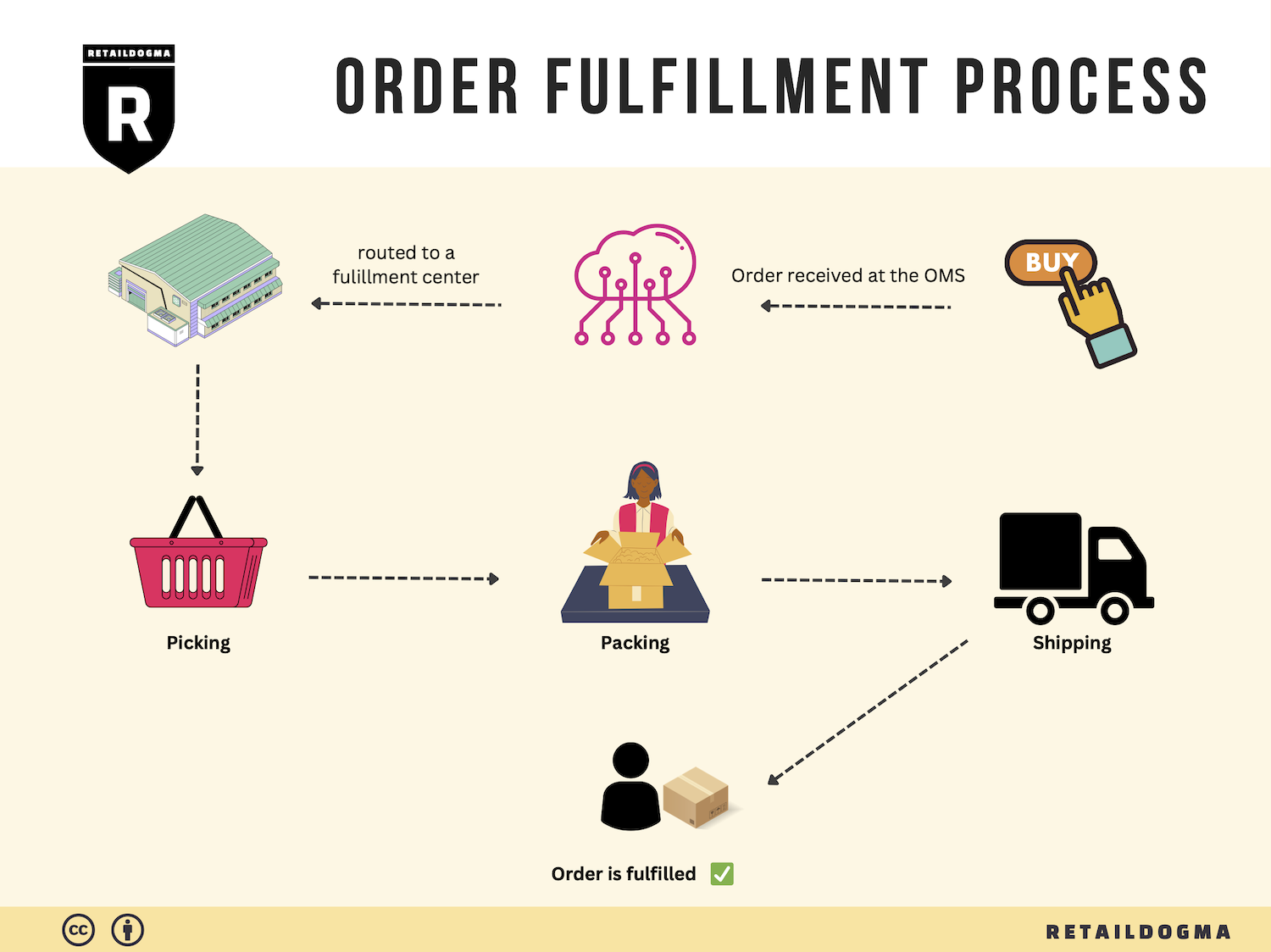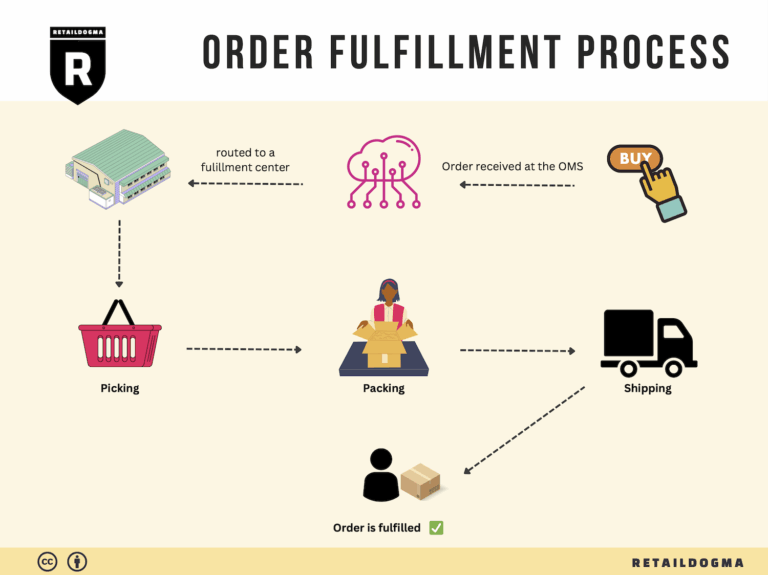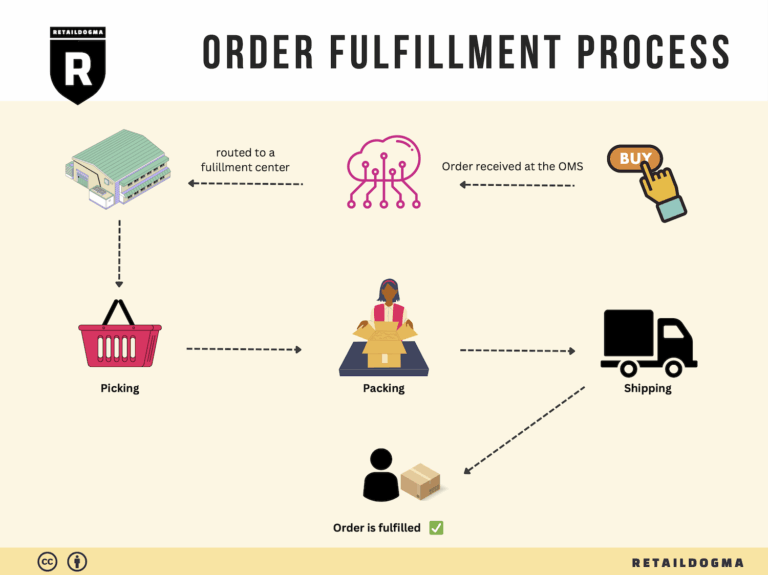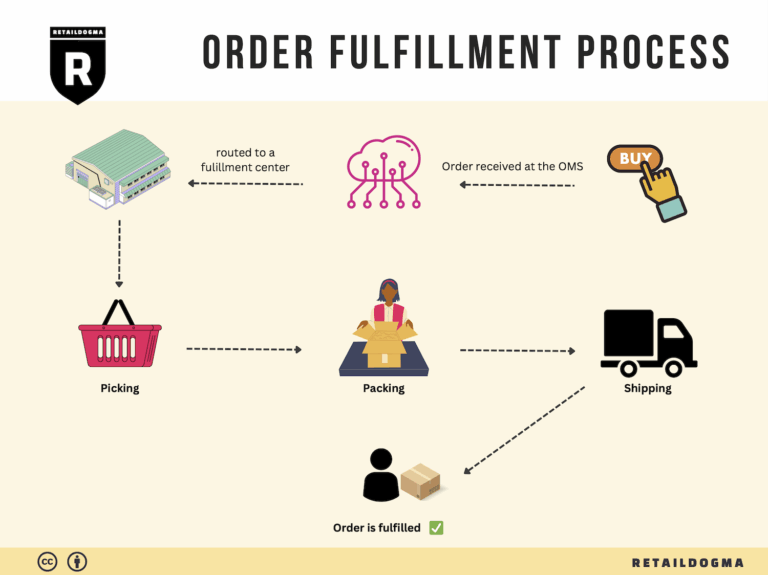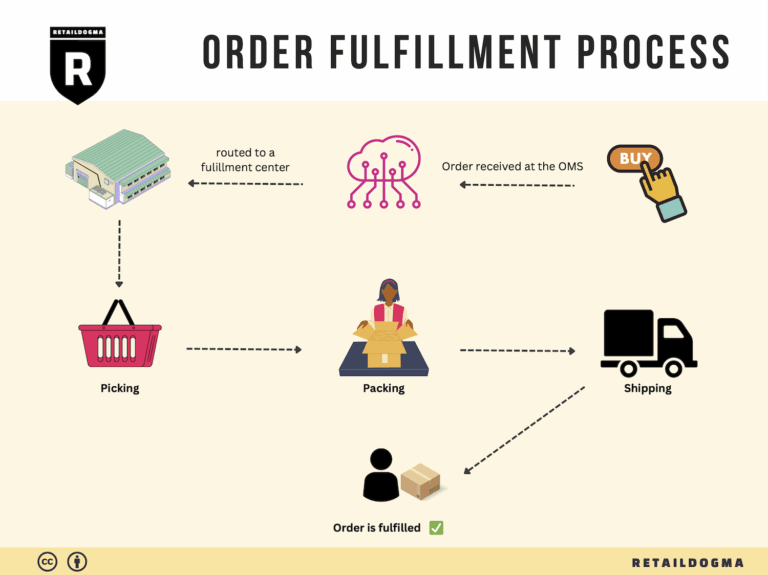How Order Fulfillment Works: A Step-by-Step Guide for Businesses
What is E-commerce Fulfillment? An Introduction for Growing Businesses
Understanding E-commerce Fulfillment
As your online business begins to grow, the excitement of increasing sales often comes with a common pain point: the overwhelming task of packing and shipping orders. For many entrepreneurs, managing logistics can quickly become a daunting responsibility, detracting from time spent on strategy and growth. If you find yourself buried under boxes, packing materials, and shipping labels, it’s crucial to recognize that fulfillment is not just a logistical task but a vital component of your customer experience.
Fulfillment refers to the complete process of getting a product from your warehouse to your customer’s doorstep. This includes everything from inventory management and order processing to packing and shipping. As businesses scale, understanding the intricacies of fulfillment becomes increasingly important. This guide aims to demystify e-commerce fulfillment by covering various models, such as Third-Party Logistics (3PL) and Fulfillment by Amazon (FBA), alongside the core services they offer.
What to Expect in This Guide
We will explore the different fulfillment models available to e-commerce businesses. You’ll learn about 3PL providers, who handle logistics for you, and FBA, where Amazon takes on storage, packing, and shipping. Each model has its unique advantages and challenges, and understanding these can help you determine the best fit for your business.
Next, we’ll delve into the core services that fulfillment partners provide. This includes warehousing, inventory management, order processing, and returns handling. Knowing what services are available will empower you to streamline operations and enhance your customer satisfaction.
Choosing the right fulfillment partner is a critical decision that can impact your business’s efficiency and profitability. We’ll discuss key factors to consider, including location, technology integration, and service levels.
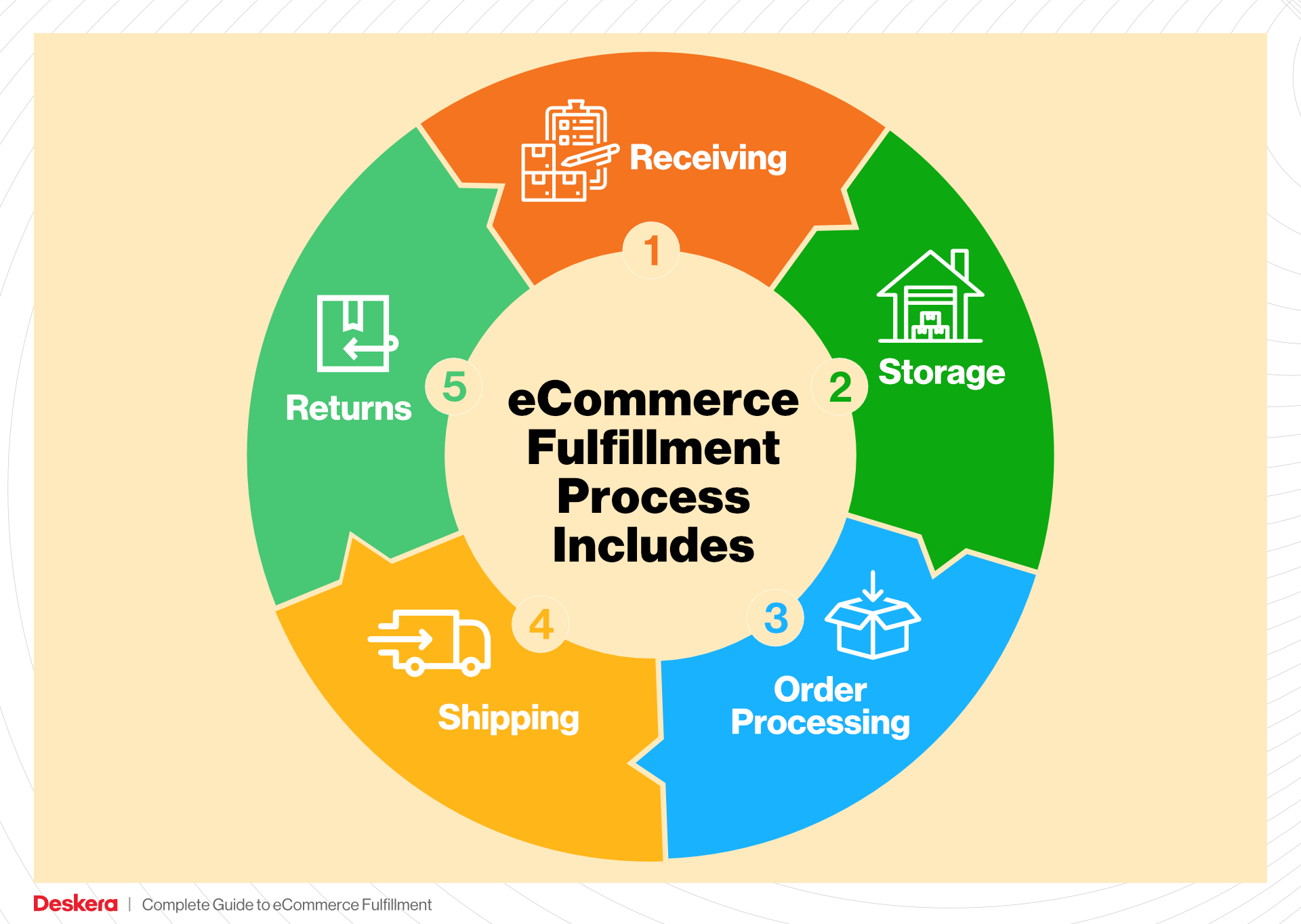
Lastly, we will address pricing structures and what to expect in terms of costs associated with different fulfillment options. Understanding these financial implications will enable you to make informed decisions that align with your budget and growth goals.
Our Goal
The ultimate goal of this guide is to empower you—business owners, operations managers, and entrepreneurs—to make smart decisions about your logistics. By understanding the various aspects of e-commerce fulfillment, you can alleviate the stress of order processing and focus on what truly matters: growing your business. Embrace the journey of fulfillment, and watch as it transforms from a burden into a strategic advantage.
What You’ll Learn In This Guide
- What is E-commerce Fulfillment? An Introduction for Growing Businesses
- The Order Fulfillment Process: From ‘Buy’ Button to Customer’s Door
- Comparing Fulfillment Models: In-House vs. 3PL vs. Dropshipping
- A Deep Dive into Amazon FBA: Pros, Cons, and Who It’s For
- Core Services Offered by Fulfillment Centers
- How to Choose a Fulfillment Partner: A 6-Point Checklist
- Understanding Fulfillment Pricing: A Breakdown of Common Fees
- Frequently Asked Questions (FAQs) about Fulfillment
- Conclusion: Is Outsourcing Fulfillment the Right Move for Your Business?
- Important Disclaimer
The Order Fulfillment Process: From ‘Buy’ Button to Customer’s Door
1. Receiving Inventory
The first step in the order fulfillment process is the Receiving Inventory stage. When products arrive at the fulfillment center, they are unloaded and checked against the purchase orders to ensure accuracy. This process typically involves scanning the items into an inventory management system, which records the quantities received and updates stock levels.
Importance: This step is crucial for maintaining accurate inventory levels and ensuring that stock is available to meet customer demand. Errors in receiving can lead to stockouts or overstock situations, both of which can negatively impact sales and customer satisfaction.
Key Term: SKU (Stock Keeping Unit) – Each product is assigned a unique SKU, which helps in tracking inventory efficiently. This system allows businesses to monitor stock levels and manage reordering processes effectively.
2. Warehouse Storage
Once inventory is received, the next step is Warehouse Storage. Products are organized and stored in designated locations within the fulfillment center. Efficient storage practices involve categorizing items based on factors like size, weight, and sales frequency to optimize space and retrieval times.
Importance: Proper warehouse storage ensures that products are easily accessible, which is vital for speeding up the order fulfillment process. A well-organized warehouse minimizes the time spent locating items, thus enhancing overall operational efficiency.
Key Term: Bin Location – Each item is assigned a specific bin location within the warehouse, which facilitates quick retrieval during the order picking stage. This system helps in maintaining organization and improving picking accuracy.

3. Order Picking
The third step in the order fulfillment process is Order Picking. When a customer places an order, the fulfillment center receives a pick list detailing the items needed for that order. Warehouse staff then use this list to locate and collect the products from their respective bin locations.
Importance: Order picking is a critical step that directly affects order accuracy and fulfillment speed. Mistakes made during this stage can lead to incorrect orders being shipped, which can harm customer satisfaction and increase return rates.
Key Term: Pick Lists – These documents outline the specific items and quantities needed for an order. Utilizing pick lists ensures that warehouse staff have clear instructions, reducing the likelihood of errors during the picking process.
4. Order Packing
After the items are picked, the next phase is Order Packing. In this step, the picked items are carefully packed into boxes or containers for shipment. Packaging materials are selected based on the type of product and its fragility, ensuring that items arrive at their destination in perfect condition.
Importance: Proper packing not only protects products during transit but also enhances the customer experience. A well-packed order can create a positive impression and encourage repeat business. Additionally, efficient packing processes can help reduce shipping costs.
Key Term: Packing Slips – These documents accompany the shipment and provide information about the order contents, including item descriptions and quantities. Packing slips are essential for ensuring that customers receive exactly what they ordered.
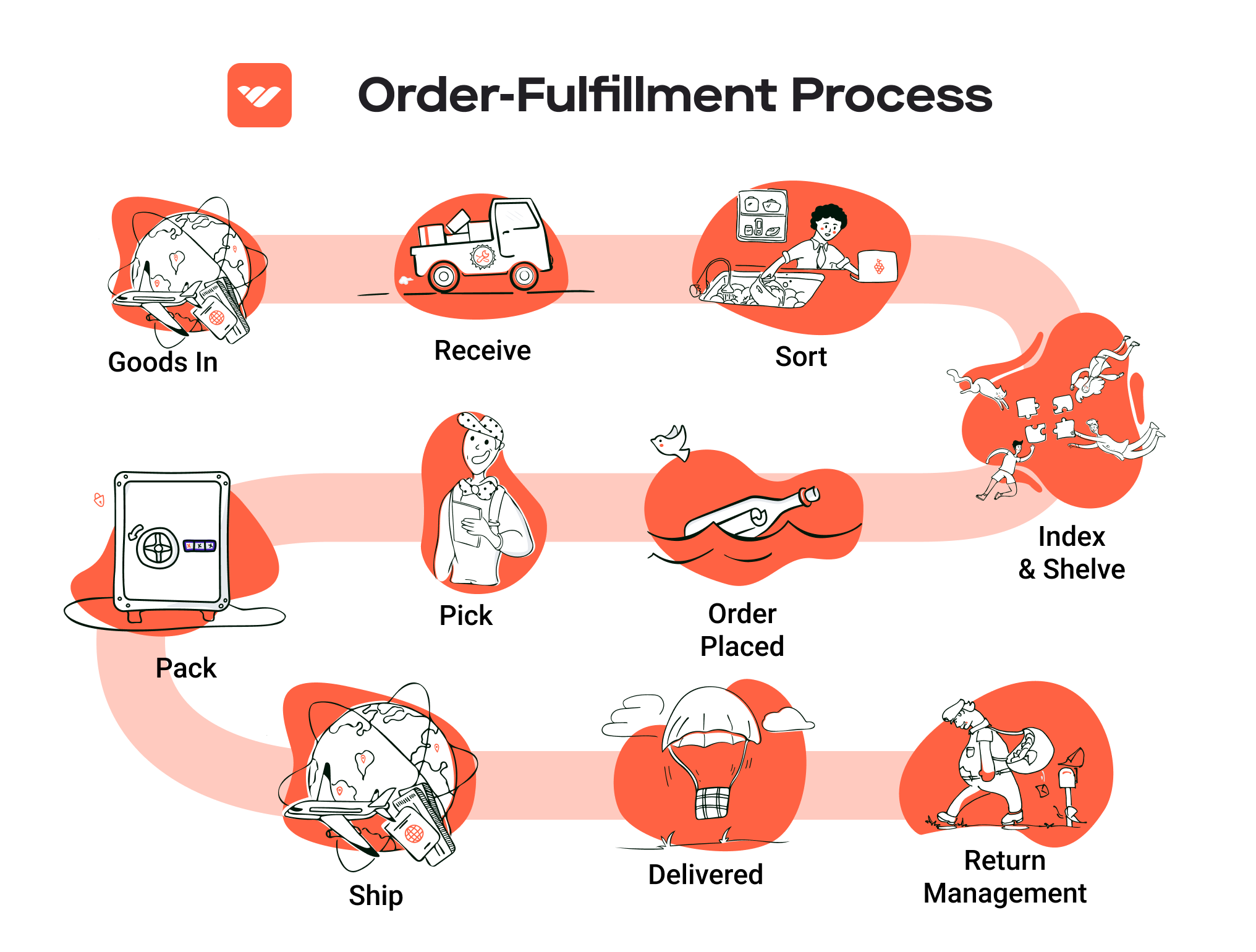
5. Shipping & Delivery
The final step in the fulfillment process is Shipping & Delivery. Once orders are packed, they are labeled and prepared for shipment. The fulfillment center partners with various carriers to select the most efficient and cost-effective shipping methods, considering factors like delivery speed and destination.
Importance: This stage is critical for customer satisfaction. Timely and reliable delivery can significantly influence a customer’s perception of the brand. Additionally, tracking systems allow customers to monitor their orders in real-time, enhancing transparency and trust.
Key Term: Shipping Labels – These labels contain vital information, such as the destination address and tracking number, ensuring that packages are delivered accurately and promptly. Effective use of shipping labels streamlines the delivery process and minimizes errors.
By understanding and optimizing each of these five steps, e-commerce businesses can enhance their order fulfillment processes, leading to improved operational efficiency and increased customer satisfaction.
Comparing Fulfillment Models: In-House vs. 3PL vs. Dropshipping
Fulfillment Model Comparison
| Model | Who Handles Inventory | Best For (Business Stage) | Key Advantage | Key Disadvantage |
|---|---|---|---|---|
| In-House Fulfillment | Business Owner/Staff | Startups to Established | Full control over inventory and process | High overhead costs and operational complexity |
| Third-Party Logistics (3PL) | Third-Party Provider | Growth to Scaling | Scalability and expertise in logistics | Less control over inventory management |
| Dropshipping | Supplier/Vendor | Startups to Growth | Low startup costs and minimal risk | Lower profit margins and reliance on suppliers |
In-House Fulfillment
In-house fulfillment involves managing the entire inventory process within your own business. This model is often favored by startups and established businesses that want complete control over their logistics operations. Managing your own fulfillment means you can oversee every aspect, from inventory management to order packing and shipping. This model allows for customization and the ability to respond quickly to customer demands, ensuring quality control at every step. However, the main disadvantages include high overhead costs associated with warehousing, staffing, and technology. Furthermore, as your business scales, the operational complexity can increase significantly, requiring additional resources and expertise to manage effectively.
Third-Party Logistics (3PL)
Third-party logistics (3PL) providers offer a comprehensive solution for businesses looking to scale without the burden of managing inventory directly. Under this model, a third-party company handles warehousing, inventory management, and shipping, allowing businesses to focus on their core competencies. This approach is particularly beneficial for growing companies that may not have the infrastructure to manage logistics effectively. The key advantage of using a 3PL is scalability; as order volume increases, 3PL providers can adapt their services accordingly. They often have established relationships with shipping carriers and can leverage economies of scale to reduce shipping costs. However, one of the main drawbacks is the reduced control over inventory management and fulfillment processes, which can lead to inconsistencies in customer experience if not closely monitored.
Dropshipping
Dropshipping is a fulfillment model where the retailer does not keep goods in stock. Instead, when a retailer sells a product, they purchase the item from a third-party supplier who then ships it directly to the customer. This model is particularly attractive to startups and businesses looking to minimize risk and initial investment. The major advantage of dropshipping is the low startup cost; businesses can offer a wide range of products without the need for upfront inventory purchases. Additionally, it allows for flexibility in product offerings, enabling businesses to pivot quickly based on market demand. However, dropshipping comes with its challenges, including lower profit margins due to reliance on suppliers for pricing and fulfillment. Moreover, businesses are at the mercy of their suppliers’ inventory levels and shipping times, which can impact customer satisfaction.
Conclusion
When choosing a fulfillment model, e-commerce businesses must consider their current stage, operational capabilities, and long-term goals. In-house fulfillment offers complete control but requires significant investment, while 3PL provides scalability and logistics expertise, albeit with less control. Dropshipping presents a low-risk entry point into e-commerce but can limit profit margins and customer experience. Understanding these models and their implications is crucial for optimizing your e-commerce operations and effectively scaling your business.
A Deep Dive into Amazon FBA: Pros, Cons, and Who It’s For
Understanding Fulfillment by Amazon (FBA)
Fulfillment by Amazon (FBA) is a service that allows e-commerce businesses to store their products in Amazon’s fulfillment centers. Amazon takes care of storage, packaging, and shipping, along with customer service and returns. This enables sellers to leverage Amazon’s vast logistics network, providing a seamless shopping experience for customers while freeing up sellers’ time to focus on other aspects of their business.
When a customer orders a product, Amazon picks, packs, and ships it on behalf of the seller. The seller’s products become eligible for Amazon Prime, which can significantly increase visibility and sales. FBA can be an appealing option for small and medium-sized enterprises (SMEs) looking to scale their operations without investing heavily in their own logistics infrastructure.
How FBA Works
-
Setup: Sellers sign up for FBA and create product listings. They can either send their products directly to Amazon’s fulfillment centers or use a third-party logistics provider to manage the shipping.
-
Storage: Products are stored in Amazon’s warehouses until they are sold. Sellers are charged storage fees based on the amount of space their inventory occupies.
-
Order Fulfillment: When an order is placed, Amazon handles the entire fulfillment process. This includes picking the item from the shelf, packing it, and shipping it to the customer.
-
Customer Service: Amazon also manages customer inquiries and returns. This can save sellers time and resources, allowing them to focus on growth and product development.
-
Multi-Channel Fulfillment: Sellers can use FBA for orders placed on their own website or other sales channels, not just Amazon. This flexibility makes it a powerful tool for growing a brand across multiple platforms.
Pros of Fulfillment by Amazon (FBA)
1. Prime Eligibility
One of the most significant advantages of FBA is the ability to offer products that qualify for Amazon Prime. This can lead to higher sales, as Prime members are more likely to purchase items that come with the benefits of fast and free shipping.
2. Increased Customer Trust
Products fulfilled by Amazon are often viewed as more trustworthy. Customers know that Amazon will handle their orders with care, which can lead to higher conversion rates and repeat business. The assurance of Amazon’s customer service also alleviates concerns about returns and refunds.
3. Multi-Channel Fulfillment
FBA is not limited to Amazon sales. Sellers can use Amazon’s fulfillment services for orders from their own websites or other marketplaces. This multi-channel fulfillment capability makes it easier for businesses to streamline their operations and manage inventory across platforms.
4. Time Savings
By outsourcing fulfillment to Amazon, sellers can save significant time. This allows them to focus on core business activities such as product development, marketing, and customer engagement, rather than logistics.
5. Scalability
FBA allows businesses to scale quickly. As demand increases, sellers can send more inventory to Amazon without worrying about managing storage space or hiring additional staff.
Cons of Fulfillment by Amazon (FBA)
1. High Fees
FBA can be costly. Sellers incur various fees, including storage fees and fulfillment fees, which can eat into profit margins. Seasonal fluctuations in storage fees can also pose challenges for inventory management.
2. Strict Inventory Rules
Amazon has stringent inventory requirements and guidelines. Sellers must ensure that their products meet Amazon’s standards to avoid penalties or removal from the platform. This can be particularly challenging for new sellers who may not be familiar with the rules.
3. Commingling Risks
FBA operates on a commingled inventory model, meaning that the inventory of multiple sellers is stored together. This can lead to issues if another seller’s product is defective or if there are mistakes in order fulfillment. Sellers may receive returns for products they did not sell, complicating their inventory management.
4. Limited Control Over Branding
When using FBA, sellers have less control over the packaging and presentation of their products. This can dilute brand identity, especially for businesses that prioritize unboxing experiences.
5. Dependency on Amazon
Relying on Amazon for fulfillment can create vulnerabilities. Changes in Amazon’s policies, fees, or fulfillment capabilities can significantly impact sellers’ operations and profitability.
Who is FBA Best For?
Fulfillment by Amazon is best suited for e-commerce businesses looking to streamline their logistics and scale quickly. Here are some specific scenarios where FBA may be particularly beneficial:
-
Startups and Small Businesses: New sellers without the resources to manage their own logistics can leverage FBA to gain access to Amazon’s infrastructure and customer base.
-
Growing Brands: Companies experiencing rapid growth can benefit from the scalability of FBA, allowing them to meet increasing demand without the need for significant investments in warehousing and fulfillment.
-
Retailers with Seasonal Products: Businesses that have fluctuating inventory needs can use FBA to manage seasonal spikes in demand without committing to long-term storage solutions.
-
Multi-Channel Sellers: Brands selling on multiple platforms can streamline their operations by using FBA for all orders, simplifying logistics and inventory management.
In conclusion, while FBA offers numerous benefits such as Prime eligibility, increased customer trust, and ease of scaling, it also presents challenges such as high fees and strict inventory rules. Businesses must weigh these factors carefully to determine if FBA aligns with their operational goals and growth strategies.
Core Services Offered by Fulfillment Centers
Inventory Management & Warehousing
Inventory management and warehousing are foundational services provided by fulfillment centers that significantly impact an e-commerce business’s operational efficiency. At its core, inventory management involves the systematic tracking of products from the moment they arrive at the fulfillment center until they are shipped to the customer. This includes maintaining optimal stock levels, forecasting demand, and ensuring accurate record-keeping.
The benefits of effective inventory management are manifold. First, it minimizes the risk of stockouts and overstock situations, both of which can be detrimental to sales and customer satisfaction. By using advanced inventory tracking systems, fulfillment centers can provide real-time data on stock levels, helping e-commerce businesses make informed decisions about reordering and product assortment. Additionally, efficient warehousing solutions reduce the cost associated with storing excess inventory, thereby improving overall profit margins.
Moreover, fulfillment centers typically offer climate-controlled storage options for sensitive products, ensuring that they remain in optimal condition. This is particularly important for businesses dealing with perishable goods or specialized items that require specific storage conditions.
Pick and Pack Services
Pick and pack services are integral to the fulfillment process, involving the selection of ordered items from inventory and packaging them for shipment. This service is essential for e-commerce businesses that need to deliver products quickly and accurately to their customers.
The primary benefit of pick and pack services is the enhancement of order accuracy and fulfillment speed. Fulfillment centers utilize advanced technology, such as barcode scanning and automated picking systems, to ensure that the correct items are picked with minimal error. This not only boosts customer satisfaction through accurate deliveries but also reduces the costs associated with returns and replacements.
Additionally, fulfillment centers often provide customizable packing options, which allow businesses to brand their packaging materials. This branding opportunity can enhance customer experience and loyalty, as well as provide a professional appearance that reflects the company’s values. The efficiency gained through outsourcing pick and pack services enables e-commerce businesses to focus on core activities such as marketing and product development, ultimately driving growth.
Kitting and Assembly
Kitting and assembly services refer to the process of grouping individual items together to create a ready-to-sell product. This can include assembling product bundles, promotional kits, or multi-component items that require pre-assembly before shipping.
The benefits of kitting and assembly are particularly relevant for e-commerce businesses looking to streamline their product offerings and enhance their marketability. By outsourcing this task to fulfillment centers, companies can save time and labor costs associated with in-house assembly. Additionally, fulfillment centers can often achieve higher efficiency levels due to their specialized equipment and expertise in handling such tasks.
Kitting can also create upselling opportunities by encouraging customers to purchase bundled products at a discounted rate. This not only increases the average order value but also enhances customer satisfaction by providing them with a convenient shopping experience. Furthermore, having pre-assembled kits ready for shipment allows businesses to respond quickly to market trends and seasonal demands, ensuring they remain competitive.
Returns Management (Reverse Logistics)
Returns management, or reverse logistics, is a critical service provided by fulfillment centers that deals with the return process of products from customers back to the business. This service includes processing returns, restocking items, and managing exchanges or refunds.
The significance of effective returns management cannot be overstated, especially in the e-commerce landscape where return rates can be high. A streamlined returns process enhances customer trust and satisfaction, as consumers are more likely to shop with businesses that offer hassle-free return policies. Fulfillment centers can efficiently handle returns, ensuring that products are quickly assessed for restocking or repair, thereby reducing the potential loss of revenue from returned items.
Moreover, effective reverse logistics can provide valuable insights into customer behavior and product performance. Analyzing return data helps e-commerce businesses identify patterns and areas for improvement, such as product quality issues or misalignment with customer expectations. By addressing these factors, businesses can enhance their product offerings and reduce return rates over time.
In conclusion, leveraging the core services offered by fulfillment centers—inventory management and warehousing, pick and pack services, kitting and assembly, and returns management—can significantly enhance the operational efficiency of e-commerce businesses. These services not only streamline logistics but also contribute to improved customer satisfaction and business growth, making them essential components for any scaling e-commerce operation.
How to Choose a Fulfillment Partner: A 6-Point Checklist
Location & Warehouse Network
Choosing a fulfillment partner starts with understanding their location and warehouse network. The geographic distribution of warehouses is crucial for timely deliveries and managing shipping costs.
Why It Matters:
– Proximity to Customers: A fulfillment center located near your target market can significantly reduce shipping times and costs.
– Regional Coverage: A robust network ensures that you can reach various regions efficiently, allowing for better inventory management and order fulfillment.
Questions to Ask:
– What is the geographic coverage of your warehouses?
– How do you determine the best location for my inventory?
– Can you provide examples of how your network has optimized delivery times for other clients?
Technology & Integrations
In today’s digital age, technology plays a pivotal role in the efficiency of your supply chain. A good fulfillment partner should offer robust technology solutions that integrate seamlessly with your e-commerce platform.
Why It Matters:
– Real-Time Tracking: Advanced systems allow for real-time tracking of inventory and orders, which enhances transparency and customer satisfaction.
– Data Analytics: Technology can provide insights into sales trends, inventory turnover, and customer preferences, aiding in better decision-making.
Questions to Ask:
– What software do you use for inventory management and order processing?
– Can your system integrate with my existing e-commerce platform?
– Do you offer APIs for custom integrations, and how often do you update your technology?
Specializations (e.g., Cold Storage, Oversized Items)
Not all fulfillment partners are created equal. Some specialize in handling specific types of products, such as perishable goods or oversized items, which may be critical depending on your inventory.
Why It Matters:
– Tailored Solutions: A partner with experience in your specific product category can provide specialized handling and storage solutions, reducing the risk of damage or spoilage.
– Regulatory Compliance: For items like food or pharmaceuticals, compliance with health regulations is essential.
Questions to Ask:
– What types of products do you specialize in handling?
– Do you have any certifications or compliance measures in place for specific product categories?
– Can you accommodate seasonal fluctuations in demand for specialized products?
Scalability & Capacity
As your business grows, your fulfillment needs will evolve. It’s vital to choose a partner that can scale with you, whether that means handling an increase in order volume or expanding service offerings.
Why It Matters:
– Future-Proofing: A scalable partner can adapt to your changing business needs without significant disruptions.
– Capacity Management: Understanding a partner’s capacity can help you avoid stockouts or delays during peak seasons.
Questions to Ask:
– How do you handle fluctuations in order volume, especially during peak seasons?
– What is your maximum storage capacity, and how can it be expanded?
– Can you provide examples of how you’ve supported other businesses through growth phases?
Pricing and Contracts
Understanding the pricing structure and contract terms of a fulfillment partner is crucial to maintaining your profit margins and ensuring that you are not caught off guard by hidden fees.
Why It Matters:
– Cost Predictability: Transparent pricing helps you budget effectively and avoid unexpected costs.
– Contract Flexibility: Contracts should allow for changes in your business needs without incurring penalties.
Questions to Ask:
– Can you provide a detailed breakdown of your pricing structure?
– Are there any hidden fees, such as for storage, packing, or shipping?
– What are the terms for contract renewal or termination, and can they be adjusted as my business needs change?
Customer Support & Reviews
Effective customer support can make a significant difference in your experience with a fulfillment partner. Their responsiveness and willingness to resolve issues quickly can impact your business operations.
Why It Matters:
– Issue Resolution: Quick and effective support can prevent minor issues from escalating into major problems that affect customer satisfaction.
– Reputation Insight: Reviews and testimonials can provide insight into the partner’s reliability and service quality.
Questions to Ask:
– What are your customer support hours, and how can I reach you?
– Do you have a dedicated account manager, and how often will we communicate?
– Can you provide references or case studies from other clients that highlight your customer service capabilities?
By following this checklist, e-commerce business owners, operations managers, and entrepreneurs can make informed decisions when selecting a fulfillment partner. A thorough evaluation of potential partners based on these criteria can help ensure a successful partnership that supports your growth and operational efficiency.
Understanding Fulfillment Pricing: A Breakdown of Common Fees
Initial Setup Fees
When partnering with an Amazon fulfillment center, businesses may encounter initial setup fees. These fees typically cover the costs associated with creating your account, integrating your inventory management system, and onboarding processes. Depending on the complexity of your operations and the fulfillment center’s requirements, setup fees can vary widely.
Calculation: Initial setup fees may be a flat rate or based on the volume of products being introduced. Some fulfillment centers offer free setup for businesses that meet specific thresholds, while others may charge anywhere from $100 to $1,000. It’s crucial to clarify what is included in this fee to avoid unexpected costs down the line.
Receiving Fees
Receiving fees are charged when your inventory arrives at the fulfillment center. This fee covers the labor and resources needed to unload, inspect, and log your products into the system.
Calculation: Typically calculated per pallet or per unit, receiving fees can range from $20 to $50 per pallet, or a smaller fee per item. The exact cost will depend on the fulfillment center’s processes and the nature of the goods. For example, oversized or heavy items may incur higher fees due to the additional handling required.
Storage Fees (per pallet/bin)
Storage fees are an ongoing cost incurred for keeping your inventory at the fulfillment center. These fees can be charged monthly and are typically based on the amount of space your products occupy.
Calculation: Storage fees are generally calculated on a per-pallet or per-bin basis. For example, a typical rate might be around $10 to $30 per pallet per month. Some fulfillment centers may offer tiered pricing where the rate decreases with larger volumes. It’s essential to keep an eye on inventory levels to manage these costs effectively, as excess inventory can lead to higher fees.
Pick & Pack Fees (per item/order)
Pick and pack fees are charged for the labor involved in selecting items from storage, packaging them, and preparing them for shipment to customers. This is a crucial part of the fulfillment process that can significantly impact your overall costs.
Calculation: These fees are usually calculated on a per-item basis, ranging from $0.50 to $5.00 per item, depending on the complexity of the order and the packing requirements. For instance, customized packaging or orders that require special handling may incur higher fees. Understanding your order patterns can help you predict and manage these costs.
Shipping Fees
Shipping fees cover the cost of delivering your products from the fulfillment center to your customers. This fee can vary based on the shipping method chosen, destination, and package weight.
Calculation: Shipping fees are often determined by the carrier’s rates and can be calculated based on weight, dimensions, and shipping distance. Many fulfillment centers offer discounted rates through partnerships with major carriers, which can significantly reduce your shipping costs. It’s worth exploring different shipping options to find the most cost-effective solutions for your business.
Tips for Getting an Accurate Quote
-
Provide Detailed Information: When requesting quotes, ensure you provide detailed information about your inventory, including dimensions, weight, and type of products. This helps fulfillment centers give you a more accurate estimate.
-
Ask About All Fees: Inquire about all potential fees, including hidden costs. Understanding the complete fee structure will help you budget effectively.
-
Consider Volume Discounts: If you anticipate high shipping volumes, discuss potential discounts or tiered pricing structures with the fulfillment center.
-
Regularly Review Costs: As your business scales, regularly review your fulfillment costs. This allows you to identify areas where you can cut expenses or negotiate better terms.
-
Utilize Technology: Leverage technology to track your inventory and fulfillment costs. This data can provide insights into your operations and help you negotiate better deals.
By understanding these common fulfillment pricing models, e-commerce business owners can make informed decisions that align with their operational needs and financial goals.
Frequently Asked Questions (FAQs) about Fulfillment
1. What is Amazon Fulfillment Center BFL1?
Amazon Fulfillment Center BFL1 is located at 1601 Petrol Road, Bakersfield, California. It is one of the many fulfillment centers operated by Amazon, designed to store, pick, pack, and ship products directly to customers. BFL1 plays a crucial role in Amazon’s logistics network, helping ensure fast delivery times for customers in the region.
2. How does Amazon BFL1 handle inventory management?
Inventory management at Amazon Fulfillment Center BFL1 involves sophisticated technology and processes. Products are tracked using barcode scanning, and the center utilizes real-time data analytics to optimize stock levels. This ensures that popular items are readily available while minimizing excess inventory, which is essential for maintaining efficient operations.
3. What services does Amazon BFL1 provide to sellers?
Amazon BFL1 offers a range of services for sellers enrolled in the Fulfillment by Amazon (FBA) program. These services include storage of products, order processing, packing, shipping, and customer service. Sellers can benefit from Amazon’s extensive logistics network, allowing them to reach customers quickly and efficiently.
4. How is Amazon BFL1 different from a traditional warehouse?
The primary difference between Amazon BFL1 and a traditional warehouse lies in functionality. While a warehouse mainly focuses on storing goods, a fulfillment center like BFL1 is designed for the entire order fulfillment process. This includes picking, packing, shipping, and handling returns, enabling a seamless customer experience.
5. What is a 3PL, and how does it relate to Amazon BFL1?
A Third-Party Logistics (3PL) provider is a company that offers logistics services to businesses, including warehousing, transportation, and fulfillment. Amazon BFL1 can be considered a form of 3PL, as it provides fulfillment services to sellers who use the FBA program. This allows sellers to leverage Amazon’s logistics capabilities without managing their own warehousing and shipping operations.
6. How much do fulfillment services at Amazon BFL1 cost?
The cost of fulfillment services at Amazon BFL1 varies based on several factors, including the size and weight of products, storage duration, and the number of orders processed. Sellers can refer to Amazon’s FBA fee structure for detailed pricing, which typically includes storage fees and fulfillment fees per item sold.
7. What are the advantages of using Amazon BFL1 for fulfillment?
Utilizing Amazon BFL1 for fulfillment offers numerous advantages, including:
– Fast Shipping: Access to Amazon Prime customers and expedited shipping options.
– Scalability: Ability to scale operations easily as demand fluctuates.
– Customer Service: Amazon handles returns and customer inquiries, relieving sellers of these responsibilities.
– Increased Visibility: Products become eligible for Amazon’s marketing and promotional tools.
8. How does Amazon BFL1 handle returns?
Amazon BFL1 has a streamlined process for handling returns. Customers can initiate returns through their Amazon account, and once the item is returned, it is sent back to the fulfillment center. The center then assesses the returned item for restocking or disposal, ensuring that the seller is notified of the return status.
9. Can I track my inventory stored at Amazon BFL1?
Yes, sellers can track their inventory stored at Amazon BFL1 through the Amazon Seller Central dashboard. This platform provides real-time updates on inventory levels, sales performance, and order status, allowing sellers to manage their stock efficiently.
10. What are the requirements for using Amazon BFL1 for fulfillment?
To use Amazon BFL1 for fulfillment, sellers must enroll in the Fulfillment by Amazon (FBA) program. This involves creating a seller account, listing products, preparing items according to Amazon’s guidelines, and shipping inventory to the fulfillment center. Additionally, sellers must comply with Amazon’s policies and standards for product quality and customer service.
Conclusion: Is Outsourcing Fulfillment the Right Move for Your Business?
Evaluating the Benefits of Outsourcing Fulfillment
As you contemplate the future of your e-commerce business, consider the substantial advantages that outsourcing your fulfillment can offer. By partnering with a fulfillment service, you can save valuable time that can be redirected towards strategic growth initiatives. This not only enhances productivity but also allows you to focus on core business functions such as marketing and customer engagement.
Scalability is another crucial benefit. With over 1,300 Amazon fulfillment centers globally, including the BFL1 center in California, you gain access to a vast network that can support your growth ambitions. Whether you’re experiencing seasonal spikes in demand or planning to expand your product line, a reliable fulfillment partner can adjust to your needs seamlessly, ensuring that your operations remain efficient and responsive.
Furthermore, leveraging the expertise of a fulfillment service means you benefit from industry best practices, advanced technology, and logistics knowledge that may be beyond your current capabilities. This expertise can lead to improved shipping times, reduced costs, and enhanced customer satisfaction—key factors that drive repeat business and brand loyalty.
However, the success of outsourcing fulfillment hinges on selecting the right partner. Take the time to evaluate potential providers thoroughly, considering their location, technology, and service offerings to ensure alignment with your business goals.
Strategic Next Steps
To determine if outsourcing fulfillment is the right move for your business, start with a comprehensive audit of your current shipping processes. Assess your efficiency, costs, and ability to scale. This evaluation will provide clarity on whether a fulfillment partner could enhance your operations and drive growth. By making an informed decision, you position your business for success in an increasingly competitive e-commerce landscape.
Important Disclaimer
⚠️ Important Disclaimer
The information in this guide is for educational purposes. Fulfillment services, pricing, and platform features change frequently. Always conduct your own due diligence and consult with providers directly before making business decisions.
